Вы здесь
Everything parents should know about stem cell therapy for Autism
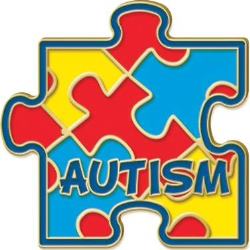 Stem cell therapy for autism is an ongoing topic of research and is considered experimental by the medical community. Parents can find fee-for-service clinics that advertise stem cell therapy for autism, but most of these clinics are operating without FDA approval, and each clinic promotes their own approach, which creates a lot of confusion among parents about how to compare their treatment options.
Stem cell therapy for autism is an ongoing topic of research and is considered experimental by the medical community. Parents can find fee-for-service clinics that advertise stem cell therapy for autism, but most of these clinics are operating without FDA approval, and each clinic promotes their own approach, which creates a lot of confusion among parents about how to compare their treatment options.
The purpose of this article is to clearly explain the features of stem cell therapy for autism with either the mononuclear cells from cord blood (CB-MNC) or with the mesenchymal stromal cells from cord tissue (UC-MSC). It is not our intention to be dismissive of other types of stem cell therapy for autism, but CB-MNC and UC-MSC are the types of stem cell therapy that parents in North America are most likely to try, so we want to focus on them and explain them in depth. Since this is a complicated topic, this explanation is long, but it is divided into sections that allow readers to skip around.
The idea to use stem cell therapy for autism began with stem cell therapy for cerebral palsy, which in turn began with stem cell transplants for metabolic disorders.
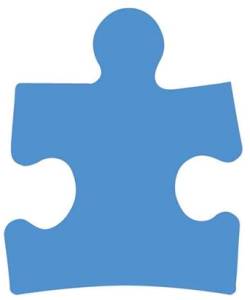 Over the years 1995 to 2007, the team working with Joanne Kurtzberg, MD, at Duke University performed over 100 cord blood transplants for children with rare metabolic disorders. Left untreated, these disorders lead to cognitive and physical impairment, and eventually death. The published results were a breakthrough1: cord blood transplants can save the lives of these patients. Not only did their cognitive function stop declining, they actually improved.
Over the years 1995 to 2007, the team working with Joanne Kurtzberg, MD, at Duke University performed over 100 cord blood transplants for children with rare metabolic disorders. Left untreated, these disorders lead to cognitive and physical impairment, and eventually death. The published results were a breakthrough1: cord blood transplants can save the lives of these patients. Not only did their cognitive function stop declining, they actually improved.
The cognitive improvements in patients with metabolic disorders led to the hypothesis that a similar treatment might help children with neurodevelopmental disorders, like cerebral palsy and autism. The treatment consists of intravenous infusions of cord blood mononuclear cells (MNC), a component of the blood that includes stem cells. An important difference is that the children with metabolic disorders received chemotherapy prior to the cord blood transplant and the stem cells engraft for life, whereas in the treatment of neurodevelopmental disorders the children do not get any chemotherapy and the stem cells are not expected to engraft. The children do receive pre-treatment with Benadryl to prevent an allergic reaction to the chemicals in which the cells were stored.
Starting in 2005, Duke University ran a series of studies that gave cord blood MNC to children with cerebral palsy, initially by giving the children their own (autologous) cord blood, and later by using sibling cord blood. Other researchers have also run clinical trials treating cerebral palsy with stem cell therapy, either using cord blood or other types of stem cells. This research is ongoing, but several papers have been published which demonstrate that stem cell therapy for cerebral palsy yields significant improvements in the treatment group versus the control group2-6.
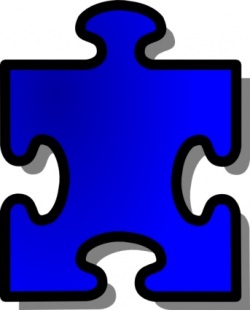 The success of stem cell therapy for cerebral palsy has inspired stem cell therapy for the much more common condition of autism. Although they are both neurodevelopmental disorders, there are important differences between cerebral palsy and autism.
The success of stem cell therapy for cerebral palsy has inspired stem cell therapy for the much more common condition of autism. Although they are both neurodevelopmental disorders, there are important differences between cerebral palsy and autism.
Cerebral palsy is caused by a brain injury near the time of birth, for example it could be triggered by bleeding in the brain or by oxygen deprivation. Cerebral palsy occurs in about two per one thousand full term births, but it is ten times more likely in premature births7,8. Overall, about 1 in 323 children in elementary school have cerebral palsy (CDC). Usually cerebral palsy is diagnosed in the first year of life, when the baby’s motor skills fall behind the normal developmental milestones.
Autism spectrum disorder (ASD) usually is not diagnosed until the child is a few years old, based on difficulties with language and social skills, and behaviors that are rigid or repetitive. The percentage of children with autism has been rising in developed countries; over the span of one decade in the United States the prevalence of autism has gone from 1 in 125 to the latest statistic of 1 in 59 children (CDC)9. We are at the point where everyone with young children knows somebody who has a child with autism.
Autism spectrum disorder is known to have multiple risk factors and paths of development, so that neurologists call it a “heterogeneous” disorder. For some children there is a genetic component to autism: over 1000 candidate genes have been associated with autism, autism is known to run in some families, and twins and siblings are more likely to both have autism10-12. Multiple environmental risk factors have also been associated with autism, including parental age, maternal health during pregnancy, heavy metal exposure in early childhood, and many others13,14. Although the theory that “vaccines cause autism” has been conclusively disproved15, we do know that children with autism are more likely to have heightened immune system activity16,17 and neuro-inflammation in the brain18,19. There is a saying in this community that, “If you have met one person with autism, then you have met one person with autism” because no two case are alike20.
 Autism is a good candidate for stem cell therapy because evidence exists that some types of stem cells, given intravenously, can improve the overall regulation of the immune system and the neural connectivity in the brain21-23. Yet clinical trials for autism are lagging behind the research on cerebral palsy. Between the years 2011 to 2018, worldwide there were 70 stem cell clinical trials for cerebral palsy and closely related conditions, versus only 14 stem cell trials for autism24-27.
Autism is a good candidate for stem cell therapy because evidence exists that some types of stem cells, given intravenously, can improve the overall regulation of the immune system and the neural connectivity in the brain21-23. Yet clinical trials for autism are lagging behind the research on cerebral palsy. Between the years 2011 to 2018, worldwide there were 70 stem cell clinical trials for cerebral palsy and closely related conditions, versus only 14 stem cell trials for autism24-27.
Dr. Kurtzberg’s team at Duke launched their first autism clinical trial in 2014 treating children with their own cord blood (NCT02176317). Although the study did not have a control group, the published results show significant improvements on the Vineland Adaptive Behavior Scale (VABS) as well as clinician-measured scales22. Improvements were much better in children that started with a non-verbal IQ at or above 70. A similar study at Sutter Health in California (NCT01638819), using a lower cell dose, did not find significant improvements23.
Since then, both Duke University and the Panama Stem Cell Institute have completed clinical trials that treat autism with a different source of cells, the mesenchymal stromal cells (MSC) from cord tissue (described in detail below). The Panama trial was conducted in 2015 and the results were published in June 201941, while the Duke trial was conducted in 2017 and the data is still in preparation.
The table below is a summary of stem cell clinical trials for autism so far, restricted only to trials in North America and to trials using either cord blood MNC (abbreviated CB-MNC) or cord tissue MSC (abbreviated UC-MSC).
Autism Trial ID | Trial Launch | Trial | Cell Type & Source | # Patients | Cell Dose |
July 2012 Sutter | Own CB-MNC | 29 | 16 M/kg | ||
June 2014 Duke | Own CB-MNC | 25 | 26 M/kg | ||
July 2014 Panama | Donor UC-MSC | 47 | 0.5M/kg - 1M/kg | ||
July 2016 Duke | Own CB-MNC | 165 | > 25 M/kg | ||
Apr. 2017 Duke | Yes | Donor UC-MSC | 12 | 2M/kg - 6M/kg | |
Oct. 2017 Duke | No | Sibling CB-MNC | Open ended | n/a | |
Sep. 2019 Duke | No | Donor UC-MSC | 164 | 6M/kg | |
Mar. 2020 Duke | No | Donor UC-MSC | 12 | 2M/kg |
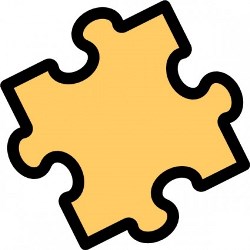 Based on laboratory studies and clinical trials for other conditions, MSC are the leading cell type used to treat auto-immune disorders and inflammation28-30. The primary sources of the MSC in clinical trials are bone marrow, fat tissue, and umbilical cord tissue24,27.
Based on laboratory studies and clinical trials for other conditions, MSC are the leading cell type used to treat auto-immune disorders and inflammation28-30. The primary sources of the MSC in clinical trials are bone marrow, fat tissue, and umbilical cord tissue24,27.
By any name, MSC are the most popular cell type in regenerative medicine because, on top of their potential to treat any type of inflammation, they have also been considered to be “immune privileged”28-30. Being immune privileged means the cells do not trigger the patient’s immune system to recognize them as foreign. When MSC from a donor are given to a patient, no testing for donor-patient matching is required. This has the enormous practical advantage that a clinic can obtain MSC from unrelated donors and use them to treat all their patients.
The latest immunology research on MSC shows that they are not 100% immune privileged, in fact it would be more accurate to say they are “immune evasive”31. Careful testing reveals that after receiving MSC from a donor, many patients do develop anti-bodies against the donor32. Fortunately, these anti-bodies exist at a very low level that does not cause symptoms, and it is still unknown how long they persist. Overall, MSC have an excellent safety record, and over the past decade tens of thousands of patients have received MSC from unrelated donors without experiencing a graft versus host reaction to MSC injections or infusions24,27.
 To date, there is no proof which stem cell therapy is better for patients with autism, cord blood MNC (CB-MNC) or cord tissue MSC (UC-MSC). Several years ago, an autism study in China reported that a combination of CB-MNC together with UC-MSC was better than CB-MNC alone21. Currently, Duke is running a clinical trial (NCT03473301) that tests CB-MNC versus UC-MSC for the diagnosis cerebral palsy. This is the world’s first test of regenerative medicine with CB-MNC versus UC-MSC for any neurologic disorder, but the results are not in yet.
To date, there is no proof which stem cell therapy is better for patients with autism, cord blood MNC (CB-MNC) or cord tissue MSC (UC-MSC). Several years ago, an autism study in China reported that a combination of CB-MNC together with UC-MSC was better than CB-MNC alone21. Currently, Duke is running a clinical trial (NCT03473301) that tests CB-MNC versus UC-MSC for the diagnosis cerebral palsy. This is the world’s first test of regenerative medicine with CB-MNC versus UC-MSC for any neurologic disorder, but the results are not in yet.
There are a few practical issues that parents should keep in mind when comparing therapies with the two cell types. We have a summary in the table below and a paragraph on each topic.
To the best of our knowledge, cord blood stem cells require some HLA matching. However, the amount of matching that is necessary continues to be debated33. A study published in 2018 found that when stroke patients were infused with completely mismatched cord blood there were no adverse reactions34. So the jury is still out on how much matching is required for regenerative medicine with cord blood.
Cell doses are higher with CB-MNC than with UC-MSC. This is partly because the UC-MSC have been isolated and cultured to create a more concentrated cell population, whereas the stem cells are only a trace component in CB-MNC22. It is also because CB-MNC are a natural component of blood, whereas UC-MSC do not naturally occur in blood and therefore care must be taken when delivering them intravenously35.
The biggest difference that parents should be aware of is that the amount of processing required to prepare a therapy differs drastically between CB-MNC and UC-MSC. The processing of cord blood primarily consists of spinning the blood to separate the MNC component and this only takes a couple of hours. By contrast, preparing MSC for therapy usually requires several stages of growing the cells in a laboratory, and this can take a month to reach a therapeutic dose. It can literally be said that no two laboratories produce exactly the same MSC product from cord tissue, because there are so many details of the process, including how the cells were handled and which chemicals were used, that may differ between labs. Hence, 40 million UC-MSC from one lab are not the same as 40 million UC-MSC from another lab. To give just one example, the Panama Stem Cell Institute grows UC-MSC through 5 passages36 whereas Duke University stops after 2 passages37.
Properties | Cell Type | |
| Cord Blood MNC | Cord Tissue MSC |
Donor-Patient Match | Partial HLA match | None |
Typical Cell Dose | 25 Million/kg | 2 Million/kg |
Laboratory Culture Time | None | 4 weeks |
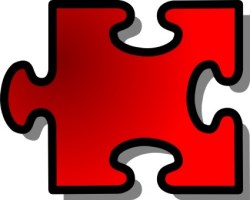 Inside the United States, the FDA only allows regenerative medicine therapies as part of registered clinical trials. You can find all US trials via the website ClinicalTrials.gov, or you can search for recruiting cord blood trials on the website of Parent’s Guide to Cord Blood. At the time this article was published, the only clinical trials available for autism in all of North America are at Duke University. Duke is researching autism therapy with both CB-MNC and UC-MSC, but all of their trials fill up quickly. Parents that have cord blood stored for their child with autism, or a full sibling of that child, can sign up for the ongoing “Expanded Access” therapy with CB-MNC.
Inside the United States, the FDA only allows regenerative medicine therapies as part of registered clinical trials. You can find all US trials via the website ClinicalTrials.gov, or you can search for recruiting cord blood trials on the website of Parent’s Guide to Cord Blood. At the time this article was published, the only clinical trials available for autism in all of North America are at Duke University. Duke is researching autism therapy with both CB-MNC and UC-MSC, but all of their trials fill up quickly. Parents that have cord blood stored for their child with autism, or a full sibling of that child, can sign up for the ongoing “Expanded Access” therapy with CB-MNC.
Parents may encounter nay-sayers who claim that “most of the cord blood in family banks is no good”. This is disproven by data that Dr. Kurtzberg’s group published when they started treating neurodevelopmental disorders with cord blood stored in family banks38: Out of 507 patients considered for their first regenerative medicine study, only 13% were excluded because the cell counts in their cord blood unit were too low. Out of the 184 children treated, only 7% of the cord blood units were found to have bacterial contamination.
Many parents in North America go to the commercial clinic at the Stem Cell Institute in Panama, and their program is described in our interview with Dr. Neil Riordan. The Panama Stem Cell Institute exclusively treats patients with MSC from umbilical cord tissue, which they produce in their own laboratory.
The rate at which these two treatment centers are seeing patients is 100/month at Duke University and 200/month at the Panama Stem Cell Institute, based on numbers stated during conference presentations.
Any clinic in the US that offers autism therapy without a registered clinical trial is operating outside the law, which raises serious concerns about why the doctor would be motivated to take such risks and what is the quality of the therapy39,40. For those parents that do try unofficial sources of stem cell therapy for autism, here are some questions to ask:
- Ask if the person who is delivering the infusion has been trained to manage adverse reactions to transfusions. This is a basic safety issue.
- Find out what type of “stem cells” you will be receiving. See above where we discuss whether donor-patient matching is required for different types of stem cells, and the possibility that the patient will develop anti-bodies to the donor.
- Find out the dose of the stem cells. Check our table above where we show the typical doses used in clinical trials. If the dose your child receives is significantly lower than the recommended trial dose, then it may not be enough to produce noticeable gains.
- Demand to know the identity of the laboratory that is providing the stem cells.
- Next, contact the laboratory directly and ask to see independent third party testing of their product. You should not pay thousands of dollars for “stem cells” without confirmation that you are actually getting viable stem cells. Any laboratory that has confidence in their product should not hesitate to provide a third party testing report.
- Ask how the cells will be shipped to the clinic and handled prior to therapy. Live stem cells have to be kept under cryogenic conditions until shortly before they are delivered to the patient.
- Study independent sources of information about the proposed therapy. Do not rely solely on testimonials, videos, and books from the clinic that wants you to purchase their services. The International Society for Stem Cell Research (ISSCR) has created a website for patients that provides guidance on “What to Ask”.
- Read and review any contract carefully. Many clinic contracts have clauses prohibiting discussion of outcomes. Know your rights and consider if any clause seems hostile.
- Beware that if your child receives therapy now at a for-profit clinic, this could later disqualify your child from participating in a clinical trial.
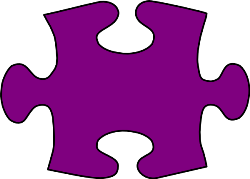 Stem cell therapy for autism is still an experimental treatment that is under research. When a clinic gives you promises that you will see gains, and/or claims that the same stem cell therapy can cure everything, run! In real medicine, results are not guaranteed and there are no cure-alls.
Stem cell therapy for autism is still an experimental treatment that is under research. When a clinic gives you promises that you will see gains, and/or claims that the same stem cell therapy can cure everything, run! In real medicine, results are not guaranteed and there are no cure-alls.
Be wary of advice from people who have “done their research” by watching YouTube videos. Real research is published in peer-reviewed journals, and you can search the journals via PubMed or Google Scholar.
Please remember that the website of Parent’s Guide to Cord Blood Foundation is not a substitute for medical advice from a physician.
References
- Prasad VK, Mendizabal A, Parikh SH, Szabolcs P, Driscoll TA, Page K, Lakshminarayanan S, Allison J, Wood S, Semmel D, Escolar ML, Martin PL, Carter S, Kurtzberg J. Unrelated donor umbilical cord blood transplantation for inherited metabolic disorders in 159 pediatric patients from a single center: influence of cellular composition of the graft on transplantation outcomes. Blood 2008; 112(7):2979-2989
- Min K, Song J, Kang JY, Ko J, Ryu JS, Kang MS, Jang SJ, Kim SH, Oh D, Kim MK, Kim SS & Kim M. Umbilical Cord Blood Therapy Potentiated with Erythropoietin for Children with Cerebral Palsy: A Double-blind, Randomized, Placebo Controlled Trial. Stem Cells 2013; 31(3):581-591.
- Kang M, Min K, Jang J, Kim SC, Kang MS, Jang SJ, Lee JY, Kim SH, Kim MK, An SSA, & Kim, M. Involvement of Immune Responses in the Efficacy of Cord Blood Cell Therapy for Cerebral Palsy. Stem cells and development, 2015; 24(19):2259-2268.
- Sun JM, Song AW, Case LE, Mikati MA, Gustafson KE, Simmons R, Goldstein R, Petry J, McLaughlin C, Waters‐Pick B, Chen LW, Wease S, Blackwell B, Worley G, Troy J, & Kurtzberg J. Effect of Autologous Cord Blood Infusion on Motor Function and Brain Connectivity in Young Children with Cerebral Palsy: A Randomized, Placebo‐Controlled Trial. Stem Cells Translational Medicine, 2017; 6(12):2071-2078
- Liu X, Fu X, Dai G, Wang X, Zhang Z, Cheng H, Zheng P, & An Y. Comparative analysis of curative effect of bone marrow mesenchymal stem cell and bone marrow mononuclear cell transplantation for spastic cerebral palsy. Journal of Translational Medicine, 2017; 15:48
- Novak I, Walker K, Hunt RW, Wallace E, Fahey M, Badawi N. Stem cell interventions for people with cerebral palsy: Systematic review with meta-analysis. Stem Cells Translational Medicine, 2016; 5(8):1014–1025.
- Cerebral Palsy statistics: 2 per 1000 births or 1 in 323 children: CDC
- Cerebral Palsy 2.2% of premature births: van Haastert IC, Floris Groenendaal F, Uiterwaal CSPM, Termote JUM, van der Heide-Jalving M, Eijsermans MJC, Gorter JW, Helders PJM, Jongmans MJ, de Vries LS. Decreasing Incidence and Severity of Cerebral Palsy in Prematurely Born Children. Pediatrics 2011; 159(1):86-91
- Autism statistics: 1 in 59 children: CDC
- Murdoch JD, State MW. Recent developments in the genetics of autism spectrum disorders. Curr Opin Genet Devel. 2013; 23(3):310-315
- Tick B, Bolton P, Happe F et al. Heritability of autism spectrum disorders: A meta‐analysis of twin studies. J Child Psychol Psychiatry 2016; 57(5):585–595.
- Sandin S, Lichtenstein P, Kuja-Halkola R. The Heritability of Autism Spectrum Disorder. JAMA 2017; 318(12):1182-1184.
- Grabrucker AM. Environmental factors in autism. Front Psychiatry 2013; 3:118.
- Mandy W, Lai M-C. Annual Research Review: The role of the environment in the developmental psychopathology of autism spectrum condition. J Child Psychol Psychiatry 2016; 57:271-292
- Plotkin S, Gerber JS, Offit PA. Vaccines and Autism: A Tale of Shifting Hypotheses. Clinical Infectious Diseases. 2009; 48(4):456–461.
- Onore C, Careaga M, Ashwood P. The role of immune dysfunction in the pathophysiology of autism. Brain, Behav Immun 2012; 26(3):383–392.
- Braunschweig D, Krakowiak P, Duncanson P, Boyce R, Hansen RL, Ashwood P, Hertz-Picciotto I, Pessah IN, Van de Water J. Autism-specific maternal autoantibodies recognize critical proteins in developing brain. Transl Psychiatry 2013; 3:e277
- Vargas DL, Nascimbene C, Krishnan C et al. Neuroglial activation and neuroinflammation in the brain of patients with autism. Ann Neurol 2005; 57(1):67–81.
- Young AMH, Chakrabarti B, Roberts D, Lai M-C, Suckling J, Baron-Cohen S. From molecules to neural morphology: understanding neuroinflammation in autism spectrum condition. Molecular Autism 2016; 7:9
- Verter F. Latest cord blood trial targets autism. Parent’s Guide Cord Blood Foundation. Newsletter July 2014
- Lv Y-T, Zhang Y, Liu M, Qiuwaxi Jnt, Ashwood P, Cho SC, Huan Y, Ge R-C, Chen X-W, Wang Z-J, Kim B-J, Hu X. Transplantation of human cord blood mononuclear cells and umbilical cord-derived mesenchymal stem cells in autism. Journal Translational Medicine 2013; 11:196
- Dawson G, Sun JM, Davlantis K, Murias M, Franz L, Troy J, Simmons R, Sabatos-DeVito M, Durham R, Kurtzberg J. Autologous Cord Blood Infusions Are Safe and Feasible in Young Children with Autism Spectrum Disorder: Results of a Single‐Center Phase I Open‐Label Trial. Stem Cells Translational Medicine 2017; 6(5):1332-1339
- Chez M, Lepage C, Parise C, Dang‐Chu A, Hankins A, Carroll M. Safety and Observations from a Placebo‐Controlled, Crossover Study to Assess Use of Autologous Umbilical Cord Blood Stem Cells to Improve Symptoms in Children with Autism. Stem Cells Translational Medicine 2018; 7(4):333-341
- Advanced cell therapy clinical trials 2011-2018 data from CellTrials.org
- Silva Couto P, Bersenev A, Verter F. The first decade of advanced cell therapy clinical trials using perinatal cells (2005–2015). Regenerative Medicine 2017; 12(8):953-968
- Verter F, Silva Couto P, Bersenev A. A dozen years of clinical trials performing advanced cell therapy with perinatal cells. Future Science 2018; 4(10):FSO351
- Silva Couto P, Shatirishvili G, Bersenev A, Verter F. First Decade of Clinical Trials and Published Studies with Mesenchymal Stromal Cells from Umbilical Cord Tissue. Regenerative Medicine 2019; on-line ahead of print
- Singer NG, Caplan AI. Mesenchymal Stem Cells: Mechanisms of Inflammation. Ann Rev Path Mech Dis 2011; 6:457-478
- Prockop DJ, Oh JY. Mesenchymal Stem/Stromal Cells (MSCs): Role as Guardians of Inflammation. Molecular Therapy 2012; 20(1):14-20
- Bernardo ME, Fibbe WE. Mesenchymal Stromal Cells: Sensors and Switchers of Inflammation. Cell Stem Cell 2013; 13(4):392-402
- Ankrum JA, Ong JF, Karp JM. Mesenchymal stem cells: immune evasive, not immune privileged. Nature Biotech 2014; 32:252–260
- Lohan P, Treacy O, Griffin MD, Ritter T, Ryan AE. Anti-Donor Immune Responses Elicited by Allogeneic Mesenchymal Stem Cells and Their Extracellular Vesicles: Are We Still Learning? Front Immunol. 2017; 8:1626.
- Kurtzberg J. To Match or Not to Match in Cord Blood Transplantation: A Modern Look at a Recurring Question. Biol Blood Marrow Transpl 2016; 22(3):398–399
- Laskowitz DT, Bennett ER, Durham RJ, Volpi JJ, Wiese JR, Frankel M, Shpall E, Wilson JM, Troy J, Kurtzberg J. Allogeneic Umbilical Cord Blood Infusion for Adults with Ischemic Stroke: Clinical Outcomes from a Phase I Safety Study. Stem Cells Translational Medicine 2018; 7(7):521-529
- Moll G, Ankrum JA, Kamhieh-Milz J, Bieback K, Ringdén O, Volk H-D, Geissler S, Reinke P. Intravascular Mesenchymal Stromal/Stem Cell Therapy Product Diversification: Time for New Clinical Guidelines. Trends in Molecular Medicine 2019; 25(2):149-163
- Riordan NH, Morales I, Fernández G, Allen N, Fearnot NE, Leckrone ME, Markovich DJ, Mansfield D, Avila D, Patel AN, Kesari S, Rodriguez JP. Clinical feasibility of umbilical cord tissue-derived mesenchymal stem cells in the treatment of multiple sclerosis. J Transl Med 2018; 16(1):57
- Kurtzberg J. Talks given at Cord Blood Connect 2018, Phacilitate 2019, and Perinatal Stem Cell Society 2019 meetings.
- Sun J, Allison J, McLaughlin C, Sledge L, Waters‐Pick B, Wease S, Kurtzberg J. Differences in quality between privately and publicly banked umbilical cord blood units: a pilot study of autologous cord blood infusion in children with acquired neurologic disorders. Transfusion 2010; 50(9):1980-1987
- FDA News Release 12/20/2018 FDA sends warning to company for marketing dangerous unapproved stem cell products that put patients at risk and puts other stem cell firms providers on notice.
- Regenexx blog 3/23/2019 Do Physicians Have a Legal Responsibility to Know About Amniotic and Umbilical Cord Scams?
- Riordan RH, Hincapié ML, Morales I, Fernández G, Allen N, Leu C, Madrigal M, Rodríguez JP, Novarro N. Allogeneic Human Umbilical Cord Mesenchymal Stem Cells for the Treatment of Autism Spectrum Disorder in Children: Safety Profile and Effect on Cytokine Levels. Stem Cells Translational Medicine 2019; 8(10):1008-1016.
- Dawson G, Sun JM, Baker J, Carpenter K, Compton S, Deaver M, Franz L, Heilbron N, Herold B, Horrigan J, Howard J, Kosinski A, Major S, Murias M, Page K, Prasad VK, Sabatos-DeVito M, Sanfilippo F, Sikich L, Simmons R, Song A, Vermeer S, Waters-Pick B, Troy J, Kurtzberg J. A Phase II Randomized Clinical Trial of the Safety and Efficacy of Intravenous Umbilical Cord Blood Infusion for Treatment of Children with Autism Spectrum Disorder. Journal of Pediatrics 2020; 222:164-173.


